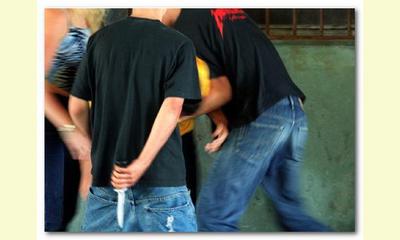|
|
Mexico: Urgent to incorporate culture of peace in formal education
un articulo por Benny Cruz Zapata, EnLíneaDIRECTA
Faced with the adverse situation in our country, it is urgent that we incorporate the culture of peace in our formal education system, according to the Coordinator of the UNESCO Associated Schools, Eduardo Delgado Gurrola .

click on photo to enlarge
In his opinion, education is and will remain incomplete as long as we do not incorporated the promotion of a culture of peace and non-violence in our school. These subjects remain pending at a time when our children are victims of violence, leaving a trail of damage in children and youth who are victims of attacks.
He refers to the finding of the Organization for Economic Cooperation and Development (OECD ) that among 23 countries where it was measured, Mexico ranks first in cases of school violence. He points out that this epidemic does not escape Tamaulipas schools, where the "law of the jungle" prevails, where only the strongest prevail, and where there are countless assaults ranging from verbal to physical.
"In monitoring the situation we see not only that aggressions are the order of the day among the students, but that the level of violence has increased, forcing educational authorities to take action on the matter ." However their actions have not been enough to contain the problem; although there is talk of violence-free schools, actually there are insults, beatings and shouting on a daily basis.
Gurrola Delgado considers that the education system should stop considering the problem of school violence only as an internal problem, but rather it should be understood as a social reality where violence is present at every level.
"This is why it is important to promote a culture of peace and nonviolent conflict resolution, realizing that the entire society is involved in the dynamics of aggression. Children and young people are simply repeating what they see around them. If there is violence at home, they bring this violence to the school."
(Click here for a Spanish version of this article)
|








|
DISCUSSION
Pregunta(s) relacionada(s) al artículo :
Peace Studies in School Curricula, What would it take to make it happen around the world?
* * * * *
Comentario más reciente:
:
During the Asian Educators Symposium, we found out that Peace Education is still not part of the school curriculum in most countries. However, the participating teachers have been incorporating peace education in their teaching subjects, such as English, social studies, and character education. We all agreed that love and the will to nurture peace in children are the most important basis for peace education. Even if peace education is not a part of the curriculum, peace can be taught through any subject. Whatever you are teaching, if it comes from the heart, then it will touch the minds of children.

|
|









